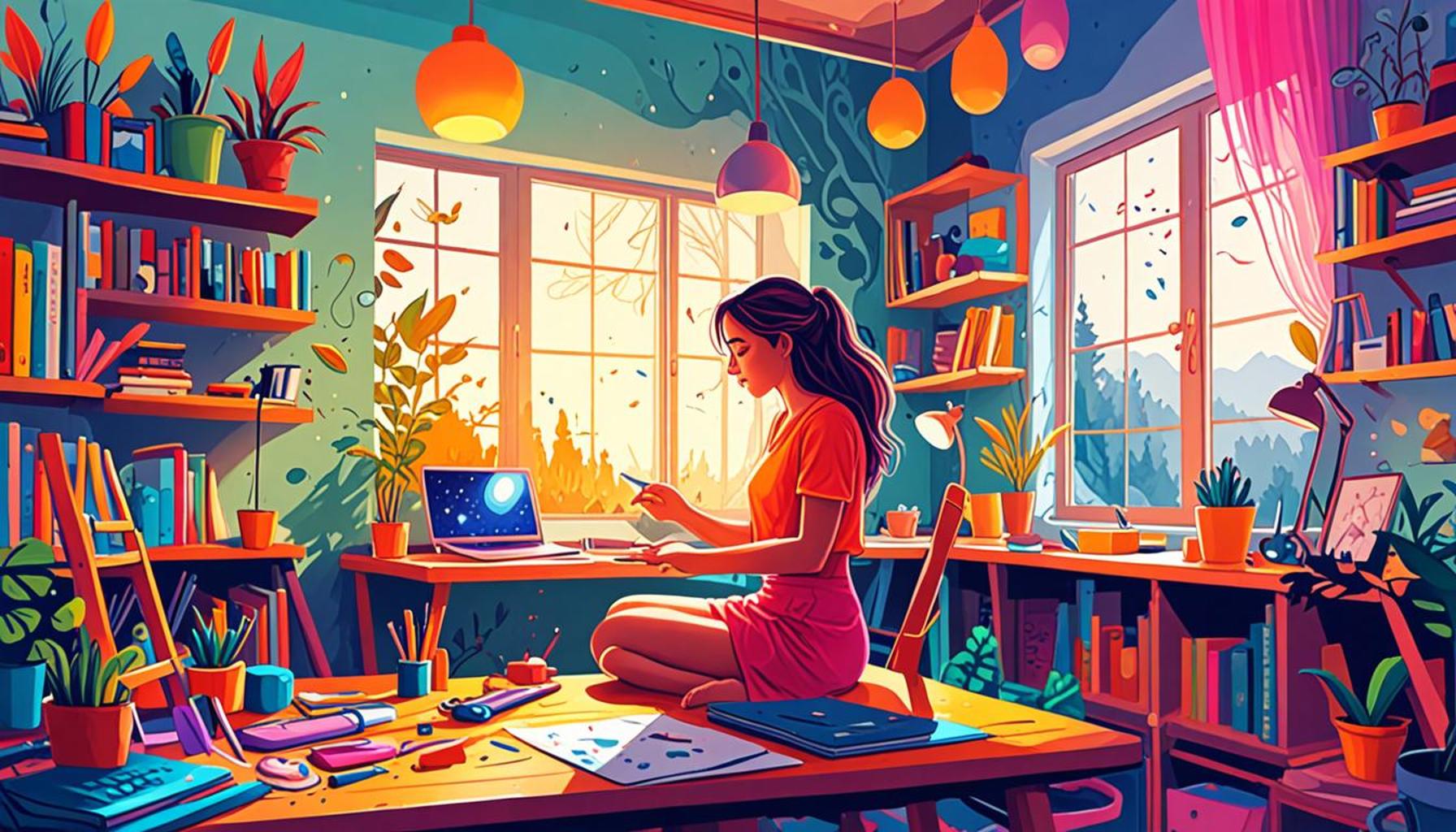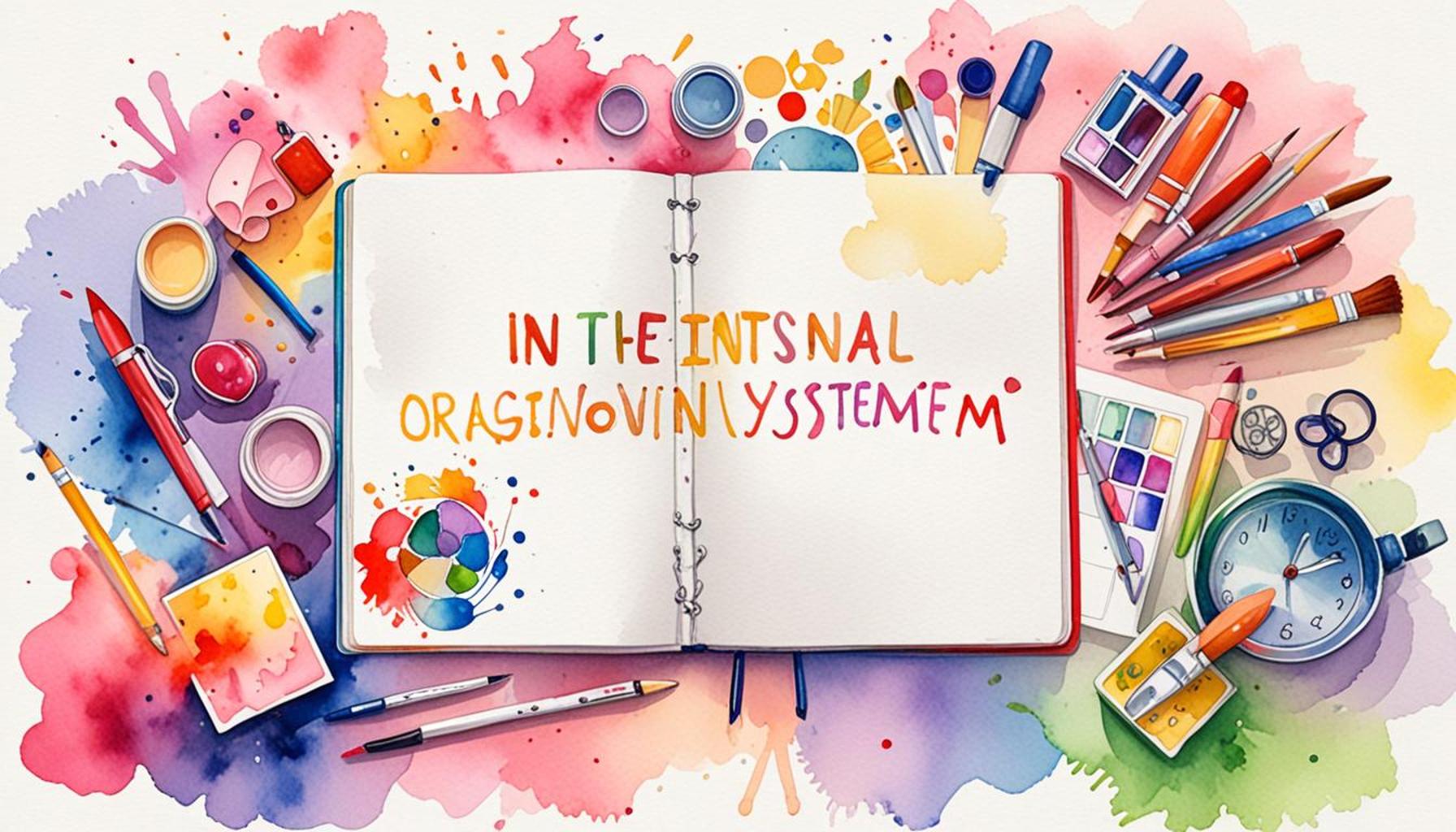The Role of Intentional Design in Stress Reduction: Creating Environments that Promote Well-Being and Mental Clarity

Embracing Intentional Design for Enhanced Well-Being
In our fast-paced modern life, where responsibilities and commitments often overlap, creating nurturing spaces is essential for maintaining balance. The idea of intentional design stands out as a vital approach to curating environments that are not just aesthetically pleasing but also promote stress reduction and elevate mental clarity. This intentionality involves thoughtfully crafting our surroundings—whether homes, workplaces, or recreational areas—to enhance well-being and foster resilience amidst chaos.
At the heart of intentional design lie several key components that can transform an ordinary space into a sanctuary for peace and productivity:
- Natural Light: The importance of natural light cannot be overstated. Exposure to sunlight is directly linked to improved mood and increased productivity. For example, workplaces that incorporate large windows and open layouts allow for the penetration of natural light, helping employees feel more alert and engaged. Studies have shown that employees in well-lit environments report higher levels of satisfaction and lower levels of fatigue.
- Color Psychology: The colors that surround us are more than mere visual stimuli; they significantly impact our emotions and behaviors. Research indicates that certain colors can evoke specific feelings—such as blues and greens, which are associated with calmness and tranquility. For instance, many healthcare facilities utilize soft blue tones to create a soothing environment for patients, fostering healing and comfort.
- Nature Integration: Incorporating elements of nature into our spaces can work wonders for our mental health. Studies have demonstrated that interactions with nature, even in small doses like indoor plants or natural wood finishes, can reduce stress levels and enhance overall well-being. Biophilic design—an approach that seeks to connect people with nature—has gained traction in urban environments, as seen in cities like New York, where green walls and rooftop gardens are becoming increasingly common.
Additionally, the emergence of mindfulness spaces within various environments has garnered attention for their role in promoting mental clarity. Designating areas for meditation or quiet contemplation encourages individuals to step back, breathe, and reflect—benefits that are particularly crucial in high-stress settings like corporate offices and educational institutions. For example, tech companies such as Google and Apple have embraced this concept, offering dedicated relaxation zones where employees can de-stress and recharge their mental energies.
As we delve deeper into the intricacies of intentional design, it becomes clear that these thoughtful choices are pivotal in creating environments that empower individuals to navigate daily challenges effectively. By curating spaces that emphasize light, color, and nature, we can cultivate a sense of sanctuary that resonates throughout our personal and professional lives.
DISCOVER MORE: Click here to learn how to create more space

Key Elements of Intentional Design for Stress Relief
Understanding the pivotal role of intentional design in stress reduction begins with examining the key elements that contribute to effective environments promoting well-being and mental clarity. These design principles are not merely aesthetic choices; they are strategically informed decisions that can enhance human experiences within various spaces. As we explore these elements, it becomes evident that thoughtful design can significantly impact our emotional and psychological states.
One of the foremost considerations in intentional design is the utilization of open space. A spacious environment creates an atmosphere of freedom and ease, reducing feelings of confinement that can lead to stress. For instance, corporate offices that adopt an open-plan layout encourage collaboration and communication while minimizing barriers that can contribute to workplace anxiety. Research shows that employees in more open settings report feeling less stressed and more connected to their colleagues, fostering a sense of community.
An essential facet of intentional design is acoustic comfort. Noise pollution is often an underappreciated stressor, especially in urban environments and busy workplaces. Incorporating sound-absorbing materials, such as carpets, wall panels, and even acoustic ceiling tiles, can significantly reduce ambient noise, leading to lower stress levels. Studies indicate that well-designed acoustics can improve concentration and overall satisfaction in both personal and professional spaces. This is particularly relevant in educational institutions, where learning environments must minimize distractions to optimize student performance.
Another powerful component is ergonomics. The design of furniture and tools that naturally accommodate human anatomy can prevent physical discomfort, which is typically exacerbated by improper posture or inadequate support. Ergonomic chairs and adjustable desks are becoming staples in modern workplaces, helping to reduce physical strain and promote mobility. It’s not just about comfort; ergonomic design can lead to increased productivity and a notable decrease in stress-related ailments.
Importantly, the integration of personalization within design can also play a vital role in enhancing mental clarity. Allowing individuals to personalize their workspaces with personal items—photos, artwork, or plants—can foster a sense of ownership and comfort. This practice has been shown to boost morale and reduce feelings of alienation, ultimately contributing to a more relaxed environment. Personalized spaces resonate deeply with individuals, providing a unique avenue for self-expression amidst the often impersonal nature of modern design.
As we begin to appreciate these key design components, it’s clear that the intent behind each choice is critical in shaping spaces that facilitate well-being and mental clarity. By prioritizing open space, acoustic comfort, ergonomic support, and personalization, we can significantly mitigate stress and create environments that empower us to thrive both personally and professionally.
| Design Aspect | Impact on Well-Being |
|---|---|
| Natural Lighting | Enhances mood and boosts productivity by decreasing cortisol levels. |
| Color Psychology | Specific colors can evoke feelings of calmness or energy, impacting emotional states. |
| Spatial Organization | Thoughtful layout can reduce anxiety and increase mental clarity. |
| Biophilic Elements | Incorporating nature creates a sense of connection and serenity. |
Each of these design elements plays a crucial role in stress reduction and promotes an environment conducive to mental clarity. Natural lighting, for instance, is significant in spaces where individuals spend extensive time, as it is known to enhance mood and minimize stress. The connection between lighting and reduced cortisol levels is well-documented, indicating a direct link to overall mental health.Moreover, color psychology demonstrates that the hues present in our surroundings can greatly impact our emotional well-being. Warm tones may create a sense of comfort, while cooler tones can promote tranquility. Attending to color selection in design is not just an aesthetic choice but a deliberate tool for mental clarity.Spatial organization further supports the concept of minimalism, which has gathered attention for its effectiveness in reducing anxiety. A thoughtfully laid-out space allows for ease of navigation and interaction, which can spark inspiration and creativity. Lastly, incorporating biophilic elements, such as plants or natural materials, fosters a vital connection to nature that is often lost in modern urban living. This connection has been shown to reduce stress levels and increase feelings of relaxation. Recognizing and implementing these intentional designs can create transformative environments that enhance psychological well-being.
DIVE DEEPER: Click here to discover more about intentional design
Natural Elements and Indoor Environment Quality
Incorporating natural elements into intentionally designed environments has emerged as a transformative trend in promoting stress reduction and enhancing overall well-being. This approach, often referred to as biophilic design, emphasizes the innate human affinity for nature. Research indicates that exposure to natural elements—such as plants, daylight, and water features—can significantly decrease stress levels and improve mental clarity. For example, office spaces that feature indoor plants have been shown to increase employee productivity by 15% while also reducing feelings of tension. The act of interacting with greenery fosters an innate sense of tranquility and encourages a more focused mindset.
Furthermore, daylight plays a pivotal role in enhancing mental health. Natural light exposure is known to regulate circadian rhythms, influencing mood and sleep patterns. Workspaces designed with large windows or skylights allow for ample sunlight, yielding benefits such as reduced eye strain and improved emotional well-being. In schools, classrooms flooded with natural light have been linked to better academic performance and increased student engagement, demonstrating how crucial environmental factors are in shaping cognitive processes.
Colors and Their Psychological Impact
The psychology of color is another essential aspect of intentional design that can influence stress levels. Different colors evoke various emotional responses; for instance, blues and greens often elicit feelings of calmness and serenity, while vibrant reds and yellows may enhance energy and creativity. By utilizing color strategically, designers can create spaces that promote well-being. Incorporating softer, cooler tones in areas designated for relaxation can encourage a peaceful atmosphere, while brighter colors in collaborative spaces can inspire innovation and teamwork. This knowledge of color psychology can be particularly beneficial in environments such as healthcare facilities where a soothing atmosphere can enhance patient recovery.
Technology Integration for Enhanced Comfort
Technology also plays a significant role in intentional design, aiding in the creation of stress-reducing environments. The incorporation of smart technology can enhance comfort levels through adaptive lighting and climate control mechanisms. For instance, smart lighting systems can adjust brightness and color temperature based on the time of day, which can help maintain optimal focus during work hours and enhance relaxation during downtime. Such adaptations empower individuals to take ownership of their micro-environments, further promoting feelings of control and reduced stress.
Community and Collaborative Spaces
The design of community spaces and areas for collaboration can also significantly influence stress and well-being. By creating environments that encourage social interaction and support networks, designers can foster relationships that act as protective factors against stress. For example, community gardens or shared workspaces that promote connectivity can enhance social support, giving individuals a sense of belonging and reducing feelings of isolation. Studies indicate that such interactions contribute to lower stress levels and improved overall satisfaction with life.
In summary, the intentional integration of natural elements, color psychology, smart technology, and community spaces creates a multifaceted approach to designing environments that actively mitigate stress and promote well-being. As we continue to learn more about the profound impacts of our surroundings, the potential for designing spaces that nurture mental clarity and emotional wellness becomes increasingly apparent.
DIVE DEEPER: Click here to learn more
Conclusion
In conclusion, the significance of intentional design in fostering environments that mitigate stress and enhance mental clarity cannot be overstated. By skillfully blending natural elements, an understanding of color psychology, the integration of smart technology, and the establishment of welcoming community spaces, we can create surroundings that actively promote well-being. This holistic approach not only addresses the physical aspects of design but also the emotional and psychological needs of individuals.
The evidence supporting the benefits of these design principles is compelling. From the calming effects of natural light to the energizing impact of vibrant colors, these factors contribute to improved mood, focus, and overall life satisfaction. As we navigate an increasingly fast-paced world, prioritizing environments that nurture our mental health becomes essential. The workplace of tomorrow, schools, and community centers should all embrace these principles, ensuring that they are places where individuals can thrive rather than merely exist.
Moreover, as communities increasingly seek to reduce feelings of isolation and promote social connections, the design of collaborative spaces emerges as a key aspect of fostering resilience against stress. By emphasizing positive interaction and support, we can cultivate environments that help individuals feel more connected and engaged with their surroundings. As this understanding grows, there lies an exciting opportunity for designers, architects, and planners alike to innovate and rethink spaces that encourage not just productivity, but also genuine well-being.
Ultimately, a commitment to intentional design holds the promise of transforming our environments into sanctuaries of peace, focus, and community, paving the way for a healthier, happier society.


